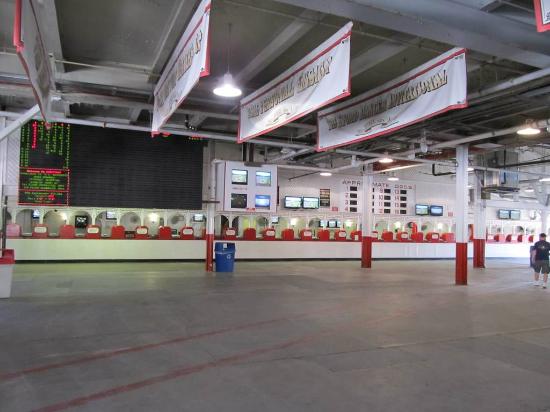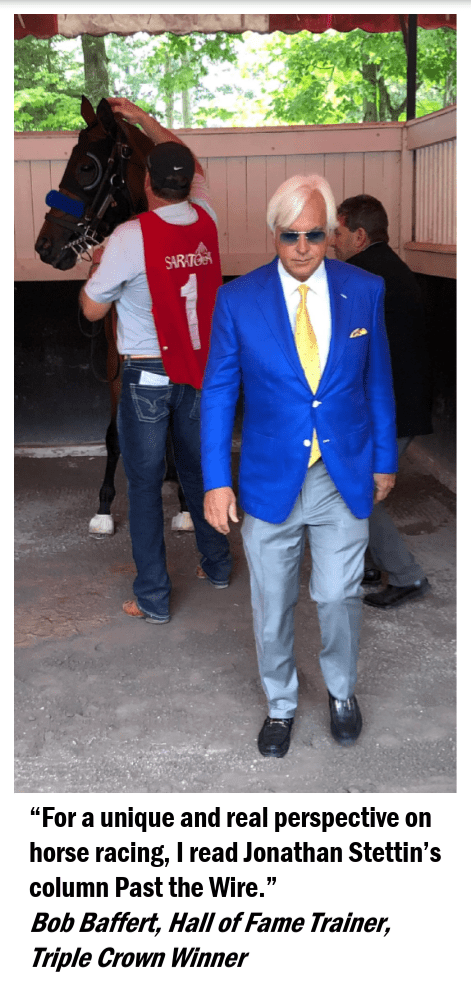
By Steve Zorn
Handle, purse and related numbers for 2020 are now available. Depending on your perspective, the results either provoke a sigh of relief that the pandemic-dominated year wasn’t worse or confirm one’s view that the racing game is slowly slipping away.
Nationwide, all-sources handle on US thoroughbred racing last year was just over $10.9 billion, only a slight decrease from the $11.0 billion recorded in 2019. That’s despite a 25% COVID-caused decrease in the number of race days and a 23% drop in the total number of races run. The 2020 number is pretty much in line with where handle has been over the past decade, but bear in mind that as recently as 2003, handle topped $15 billion. And, if we adjust for inflation, the handle decline since that peak in 2003 is almost 50%.
Even more worrying, purses paid out in 2020 were just $870 million. That’s a drop of 25% from 2019, and the lowest purse level, even without adjusting for inflation, since 1997. Not only were fewer races run in 2020, but, counter-intuitively, the average purse per race actually went down to just $31,399, a 2.7% decrease from the previous year, even though average handle per race, at $394,412, was up 29% from the previous year. The ratio of purses to total handle, 10% in 2019, dropped to only 7.7% in 2020. That’s very bad news indeed for horsemen, whose costs aren’t going down at all. That sharp decline in purses may be one reason for an even sharper decline in claiming activity in 2020, as fewer horsemen had the money to go shopping, and fewer claiming races were run. There were only 7,458 claims last year, for a total of $102.4 million, compared to 9,327 claims for $156.2 million the year before.
Purses depend, in greater or lesser measure according to the state, on handle, but the two don’t necessarily move in concert. A variety of factors contributed to the purse decline, the most important are likely to have been, first, the sharp drop-off in casino subsidies in some states, as slot-machine parlors were closed for months because of COVID, and, second, the shift from on-track to online betting for the many tracks that ran without spectators. Although on-track betting is a small fraction of the total nationwide, it does account for a significant share of handle at such boutique meets as Saratoga, Del Mar and Keeneland. And the share of handle retained by the track and the purse account is far higher for on-track betting. Nationwide, average takeout is somewhere in the neighborhood of 20%. When that’s bet on-track (or sometimes through a captive ADW like NYRABets), the track and horsemen keep all of it; when it’s bet elsewhere, something less – sometimes much less – than 10% gets returned to the host track, and the rest ends up as rebates to big bettors and profits for the ADW operator. And purse money comes from that 20 percent – or, now, 10 percent or less.
The handle figures pretty much confirm that US thoroughbred racing is dominated by three entities: the Stronach Group- 1/ST Bet (Gulfstream, Santa Anita, Golden Gate, Laurel and Pimlico) accounts for a bit over 30% of total handle; NYRA (Aqueduct, Belmont and Saratoga) for 16% (a drop in 2020 from its more usual 19-20% share); and Churchill Downs Inc. (Churchill, Fair Grounds, Arlington, Turfway and Presque Isle) for about 9%. The dozens of tracks not controlled by the big three, which altogether run well over half of all races, account for just over 40% of total handle.
There were definitely winners and losers among tracks in 2020. When everything else was closed in the spring, Will Rogers Downs in Oklahoma (annual handle up 679%) and Fonner Park in Nebraska (handle up 1,332%) ran races and drew whatever degenerate dollars just needed to find a place to bet. Among the better-known tracks, Gulfstream’s annual handle was up 30%, Tampa Bay Downs up 50% and Oaklawn up 63%. Other tracks recording increases included Keeneland, Charles Town, Indian Grand, Lone Star and Canterbury, which switched to Monday-Thursday racing to avoid competing with the big boys.
In addition to the relatively modest decline at NYRA, there were big handle declines at Santa Anita and at Churchill Downs, the latter entirely attributable to a drop in Kentucky Derby betting, after the Derby was switched from the usual first Saturday in May date. In fact, the change in dates for the Triple Crown races produced a reduction of some $208 million in total nationwide handle on the Derby, Preakness and Belmont Stakes – more than the total annual handle decline. So, but for the Triple Crown, US thoroughbred handle actually increased last year compared to 2019. That’s where the glass-half-full folks can find reason for optimism.
The handle figures also show some shifts in the popularity of various types of bets. Win-place-show betting remained the most popular, with just over 30% of total handle, followed by exactas (22%), trifectas (13%) and superfectas (8%). Pick 5 betting, often with lower takeout than other multi-race wagers, increased sharply, to $692 million, or just over 6% of total handle, while Pick 6 jackpot bets, which pay out only if there is a single unique winning ticket, accounted for only a little over 2% of total handle, despite all the attention those bets receive in race tracks’ advertising.
For those who see the recent enactment of the Horseracing Integrity and Safety Act, setting up federal drug standards and enforcement, as some sort of salvation for the industry, the handle numbers introduce a strong dose of reality. The numbers have been essentially flat for years. And the results for 2020, with its sharp reduction in races but essentially flat handle, showed that there is a finite amount of money chasing however many horse races happen to be run. Improving the perception of honesty in racing may help, but it’s unlikely to attract many new dollars, just slow the rate of decline. And for the future, increased competition from legal sports betting, where takeout is significantly lower than in horse racing, threatens to draw away at least some of the money that remains attracted to racing. And pressure on cash-strapped state governments can only result in decreasing the casino subsidies that prop up purses at many tracks, purses that will not be sustained by static or decreasing handle. The likely scenario is that smaller tracks will continue to go out of business, further concentrating the industry and providing fewer opportunities for horse folks to make a living; eventually foal crops will decrease further, reflecting that reality. From this perspective, the glass looks half-empty, with a crack in the bottom.
Note: the statistics cited above come from a variety of sources, including Equibase, the Thoroughbred Daily News, NYRA, the Horse Racing Network and the estimable @o_crunk, whose Twitter posts provide by far the most detailed look into racing economics that’s available online.




